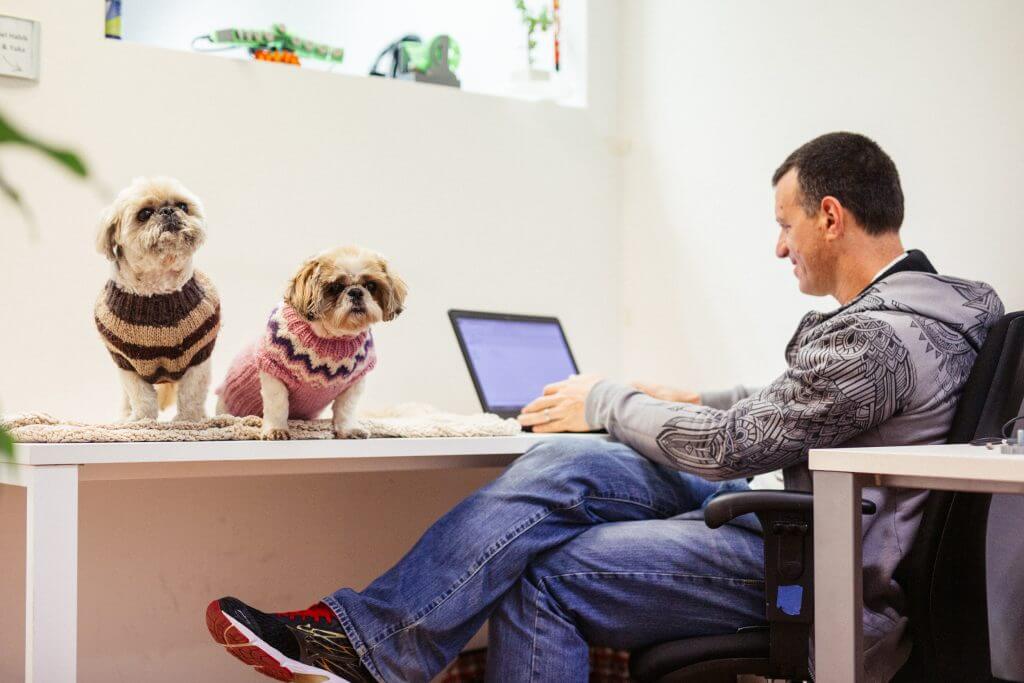

How Many Days Would You Like to Work From Home?
Pixellot, the largest sports-tech company in Israel specializes in AI-automatic sports production. During the Covid-19 pandemic, the offices were open for the most part under certain restrictions.
Thanks to the rapid, successful vaccination of most of the population in Israel, companies have returned to full-time work and offices are open with few restrictions. But we already know that the changes that Corona has brought to the labor force will remain with us. In the past year, both employers and employees have learned to adapt to a hybrid model of work, and we need to see how to incorporate this as part of a new work routine. The model allows employees to enjoy the benefits of working from home while reducing the impact and disadvantages of working from home.

A trend survey conducted in January 2021 reinforces the demand for a hybrid model. According to the survey, 73% of employees want the possibility of flexible remote work to continue, 67% of employees are interested in joint work and a physical meeting and 66% of companies are considering redesigning offices and adapting them to hybrid working.
What is a Hybrid Model?
A hybrid model combines a division of labor in which during half of the week work is conducted from home and half from the office. The prevailing recommendation today is two days from home and three in the office to produce the right balance between employees’ need for a flexible schedule, desire to work from home, avoiding traffic jams, increasing productivity, avoiding distractions in the office, and on the other hand, the organizational need to maintain social cohesion, brainstorming opportunities, mutual fertilization, creativity, and synchronization. In addition, this combination maintains employee mental health by preventing burnout as a result of the social distance, the large number of working hours, and the lack of team support, which characterizes work from home.

Of course, the adoption of a hybrid model also requires us to remain flexible in the division of working days from home and office, to adapt the division to the changing needs of employers and employees in order to meet defined tasks and goals and effectively lead a cohesive and corporate organizational culture.
How to do it right? 6 keys to success:
Focus on results and setting goals – The transition to a hybrid model requires perceptual change of the organization and the managers, and a reference to the results and not to the physical time in the office. This concept is of course not new, but is especially valid with the hybrid model, where the manager does not see the employee and is not near him part of the week. The way to produce a change in perception is through setting goals of two days, two weeks, or even two months. The key is meeting the goals – that is the measure of the employee’s success and his ability to work in a hybrid model.
Communication and direct connection – in a hybrid work model, it is important to implement digital communication channels common to the company. A platform like Slack allows all employees, both those who are physically present in the office, and those at home, to be accessible and available. It produces proper work processes and even neutralizes disruptions. Beyond that, it is important to maintain a personal and regular relationship with the employees. Managers must produce communication anchors, individually and in groups, in which they can see the employee in person and identify distress if any. The sessions can be one-on-one once a week, or a short phone call once every two days, as well as having group team conversations dedicated to social conversation.
Planning – It is important to pay attention to planning the working days in the office so that they are usually devoted to multi-participant meetings, personal meetings with employees, trainings, team meetings, planning meetings, and the like. Working days from home are dedicated to independent tasks where no immediate synchronization and collaboration is required.
Encouraging routine-breaking activities online – so as to allow employees from home to be part of the organization’s fun activities and not feel like they are “losing out” when they do not come to the office. For example, holding weekly lectures or weekly challenges on zoom, on a fixed day and time that are open to everyone.
Manager support – The transition to remote employee management also requires support for managers who have to deal with new challenges created as a result of remote work and the hybrid model. These challenges are not simple, especially for novice managers. Therefore, it is important to adjust the development and training programs for managers while providing significant support in the transition to management with the new model.
Constant examination and flexibility – the understanding that the hybrid work model is a relatively new model, requires mental flexibility and a constant examination of the model’s impact on employees and the organization. It is important to be attentive to employees – identify who works better from home and who works better from the office – and maintain personal contact at all times. The key to success in the hybrid model is listening.
Pixellot is the global leader for AI automated sports video & analytics.
If you would like to check out our current job openings, click here.




